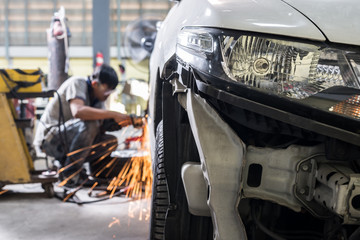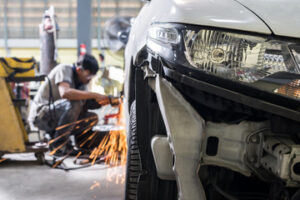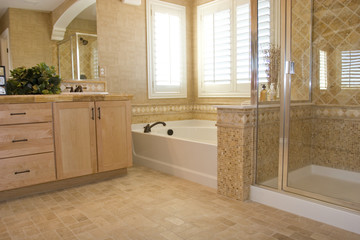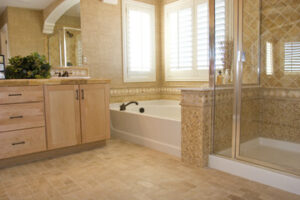Landscapes add beauty to a home or business. They can also improve drainage, inhibit weeds, conserve water, and create shaded areas.
Landscaping Harrisburg PA techniques should incorporate curves to avoid looking overdone and artificial. However, repetition is also important for creating a cohesive look.
Frame the front door of your house with contrasting shrubs and flowering plants. Use plant colors that echo those of the home for continuity.
Hardscaping describes the non-living aspects of a garden, which can be created using a variety of materials. It involves the use of paved surfaces, walls, steps, and more. Hardscaping is important to the overall look of a yard and helps create interest. It can also be used to make a yard easier to maintain.
Hardscapes can be created in a number of ways, including concrete patios, stone walkways, wooden pergolas, and more. The most important thing to remember is that hardscapes should be mixed with softscape elements. This is because both are essential for creating a beautiful and functional landscape. It is important to think about how each will work together before starting any projects.
Having hardscape features in your yard can be very appealing, especially when they are made from natural elements such as wood or stones. These structures can be designed to fit the style of your house as well as the overall landscape of your property. However, it is important to keep in mind that hardscapes can add a lot of weight to your yard. It is best to only include them if they are necessary for your landscape.
If you are considering adding some hardscapes to your garden, it is important to plan the entire project before you begin. This will help you stay within your budget and avoid any unnecessary costs. In addition, you should also consider the climate conditions in your area before installing any hardscapes. It is important to choose the right materials for your hardscapes, as they will play an important role in the final result of your landscaping project.
It is also important to match the color and texture of your hardscapes with those of your home. This will allow the two environments to blend seamlessly together. Many homeowners also like to incorporate water features into their hardscaping, such as ponds and fountains. Water features can be a great way to add both color and sound to your landscaping. However, it is important to note that water features can also be difficult to maintain, so it is important to plan accordingly.
Plantings
A lush landscape provides environmental benefits as well as aesthetic appeal. Trees and shrubs can screen out views, add shade, reduce noise, and provide wildlife habitat. Ground cover and low-growing plants like sedum can keep the soil cool, while flowering perennials and grasses create color. Do-it-yourselfers often focus on the plant selection, but other landscaping techniques such as arranging plantings in layers, adding texture and visual interest through repetition, and varying heights can help make a garden feel put together.
The first step in a do-it-yourself landscape design is to develop a plot plan, which is simply a map of the property to be designed. Take note of existing buildings and structures, fences, utility lines, slopes, soil conditions, and any other environmental concerns that may affect the design.
When selecting plants, pay attention to their mature size and consider what they will look like at the appropriate age. Then, plant them at their ideal spacing to ensure they can achieve their full size in your landscape. Be sure to give them enough room, though, because the time it takes for a plant to reach its mature size will depend on a variety of factors, including the climate and soil conditions of your location.
Landscape plants should be arranged in layers, with the lowest layer being composed of groundcovers such as sedum and perennials. The next layer should be comprised of a mixture of low- and mid-growing shrubs, such as boxwood and evergreen conifers. The tallest layer of the landscape should be comprised of trees and larger shrubs that serve as screens for blocking unwanted views or as canopies for shade.
Repeating the colors, forms, and textures of plants throughout different beds creates a sense of cohesion in the garden. This technique also makes it easier to maintain the garden, as the repetition of similar elements means less weeding and watering.
“Aim for a balance between repetition and new elements,” Lipanovich says. Too many new things can overwhelm a garden, but introducing a few fresh touches every so often keeps the landscape looking vibrant. For example, a bed filled with sedges, grasses, and perennials could be accented with a few shrubs, such as sweetbay magnolia, inkberry, and sweetspire, which can thrive in wet soil.
Lighting
Adding landscape lighting extends your use of the garden into the evening and creates a warm ambiance. It also highlights key features and helps maintain safety. Eden recommends using different lighting techniques, such as uplighting to accentuate trees and shrubs, path lighting for safety and guidance, and downlighting to illuminate focal points of the garden.
Consider the scents of your plants and how they complement each other when designing a landscape. The odor of some flowers is stronger than others, and the way in which they release their fragrance can add to or diminish a garden’s atmosphere.
Take into account the climate in the immediate area of your home when choosing trees, shrubs, and other landscaping elements. For example, deflect winter wind by planting windbreaks of trees on the north and northwest sides of your house, or tunnel summer breezes through trees and shrubs to cool roofs, walls, and windows. Xeriscaping and other energy-efficient landscaping strategies also reduce the use of water and fossil fuels. See the map below to find your climate zone and learn more about xeriscaping and other landscape practices for your region.
Water
Water conservation techniques have become a major design trend as the need to reduce landscape water consumption is more pressing than ever. Landscaping architects develop designs that minimize water consumption while providing a pleasing appearance and functionality. Water conservation strategies include planting in the spring to avoid summer heat, adding organic compost to the soil before planting, and covering all plantings with mulch to keep roots moist. Technology can also help reduce water use by allowing the homeowner to control irrigation systems based on local weather data.
Water-saving strategies also include grouping plants by their water requirements, which helps to avoid over- or under-watering. Another technique is incorporating rain gardens in runoff areas to capture and clean water before it reaches storm drains.
Adding a water feature like a pond or fountain can add interest to the yard and can also provide soothing sounds. Water features can be designed to be low-maintenance and easy to care for. Some of the hottest trends in water features are natural-looking waterscapes that resemble creek beds or meadows. Another popular water feature is the eco-friendly rain barrel, which provides a water source for garden and lawn irrigating. Water barrels can also be used to collect and hold rainfall for use during droughts or floods.






